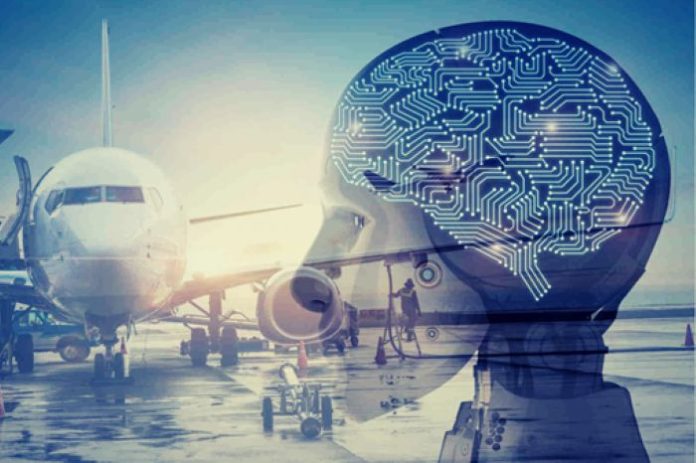Artificial Intelligence (AI) is revolutionizing nearly every sector, and aviation maintenance is no exception. Traditionally, aviation maintenance has been labor-intensive, time-consuming, and heavily dependent on manual inspections. However, with AI technologies advancing rapidly, the industry is witnessing a transformation toward smarter, predictive, and data-driven operations that enhance safety, reduce costs, and minimize downtime.
Key Takeaways
- AI is transforming aviation maintenance by enhancing predictive capabilities and automating inspections.
- Key applications include predictive maintenance, computer vision for inspections, digital twins, and NLP analysis of logs.
- Benefits of AI in aviation maintenance include enhanced safety, reduced costs, increased efficiency, and minimized downtime.
- Challenges include data quality, regulatory approval, cybersecurity risks, and skill gaps in the workforce.
- The future of aviation maintenance will rely on AI for self-diagnosis, greener aviation, and deeper human-technology integration.
Table of Contents
Understanding AI in Aviation Maintenance
AI in aviation maintenance refers to the application of machine learning algorithms, predictive analytics, computer vision, and automation tools to monitor, diagnose, and optimize the maintenance process of aircraft. These technologies help maintenance teams predict potential failures before they occur, automate inspection processes, and streamline data management.
AI doesn’t replace human engineers and technicians—it enhances their decision-making abilities, making the entire maintenance ecosystem more efficient and precise.
Key Applications of AI in Aircraft Maintenance
1. Predictive Maintenance
One of the most powerful uses of AI in aviation is predictive maintenance. Traditionally, maintenance was carried out based on scheduled intervals or after a problem occurred. AI has changed that.
Machine learning models analyze historical data, flight logs, and sensor readings to predict when a part is likely to fail. This allows engineers to replace components before they break down, reducing unscheduled downtime and avoiding costly disruptions.
For instance, by tracking patterns in vibration, temperature, and pressure sensors, AI can warn maintenance crews weeks in advance if an engine component is likely to develop an issue.
2. Computer Vision for Inspections
Aircraft inspections are time-consuming and require meticulous human attention. AI-powered computer vision systems can automatically scan aircraft surfaces using high-resolution cameras or drones.
These systems detect cracks, corrosion, dents, or missing fasteners with precision. They can compare new images with previous inspection data to identify even the smallest changes over time. This drastically reduces inspection time, improves accuracy, and enhances overall safety.
3. Digital Twins
A digital twin is a virtual replica of an aircraft or component that mirrors its physical condition in real time. AI algorithms continuously feed operational data into the twin, allowing engineers to simulate performance, wear, and failure scenarios.
Digital twins help optimize maintenance schedules, assess risks, and plan replacements with a high degree of accuracy. They are also invaluable for testing new technologies or maintenance procedures virtually before applying them to real aircraft.
4. Natural Language Processing (NLP) in Maintenance Logs
AI can analyze vast amounts of unstructured data such as maintenance logs, technical manuals, and service reports. Natural Language Processing allows systems to identify recurring issues, trends, or anomalies that might not be immediately visible to humans.
This helps airlines make better decisions, improve safety procedures, and create more effective maintenance schedules.
5. Intelligent Supply Chain Management
AI doesn’t just predict technical failures—it also optimizes spare parts inventory. By forecasting which components are likely to fail soon, AI ensures that the right parts are stocked in the right place at the right time. This minimizes delays and reduces inventory costs for airlines and maintenance providers.
6. Technician Assistance with AR and AI
Technicians can now use augmented reality (AR) glasses integrated with AI software that provides real-time instructions during maintenance tasks. For example, an AI system can project step-by-step repair procedures or safety alerts directly in a technician’s field of view.
This reduces human error, accelerates training, and ensures that even less-experienced staff can perform complex maintenance operations accurately.
Benefits of AI in Aviation Maintenance
- Enhanced Safety: AI identifies issues earlier, ensuring aircraft operate with maximum reliability.
- Reduced Costs: Predictive maintenance and automated inspections minimize unnecessary repairs and downtime.
- Increased Efficiency: AI tools streamline maintenance workflows, allowing technicians to focus on critical areas.
- Minimized Downtime: Fewer unscheduled repairs mean aircraft spend more time in the air and less time grounded.
- Data-Driven Decisions: AI provides deep insights from operational data, enabling smarter and faster maintenance strategies.
Challenges in Implementing AI
While AI offers enormous potential, the aviation industry faces some challenges:
- Data Quality: AI systems depend on accurate and consistent data from sensors and logs. Poor data quality can reduce reliability.
- Regulatory Approval: Aviation maintenance is strictly regulated, and integrating AI requires compliance with safety and certification standards.
- Cybersecurity Risks: As more aircraft systems connect to networks, protecting sensitive data becomes crucial.
- Skill Gaps: Maintenance staff must be trained to interpret AI-generated insights and use digital tools effectively.
The Future of AI in Aviation Maintenance
In the near future, AI is expected to become the backbone of aviation maintenance operations. Aircraft will increasingly self-diagnose their health status mid-flight, transmitting data to ground crews who can prepare parts and personnel before the plane even lands.
AI will also help achieve greener aviation by optimizing fuel efficiency and extending component life cycles. Moreover, as neural activation processes become better understood through explainable AI (XAI), trust in automated systems will grow, paving the way for deeper integration between humans and intelligent machines in aviation.
Reducing Administrative Burdens
Running an aircraft is similar to operating a small airline. Without professional help, owners face endless paperwork, crew coordination, and technical oversight. Aircraft management eliminates this hassle.
Conclusion
AI in aviation maintenance is not a distant dream—it’s happening now. Airlines and maintenance organizations are already leveraging predictive analytics, digital twins, and automated inspection systems to enhance reliability and reduce costs.
The synergy of human expertise and artificial intelligence ensures a safer, smarter, and more efficient aviation industry. As technology evolves, AI will continue to redefine maintenance standards—making air travel not only safer but also more sustainable and cost-effective.











